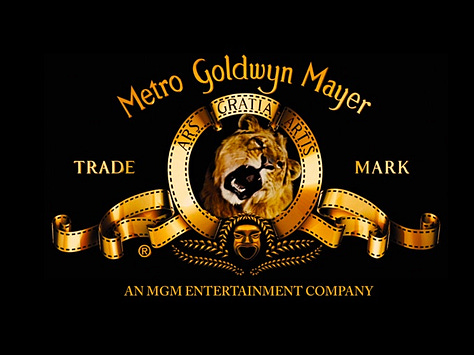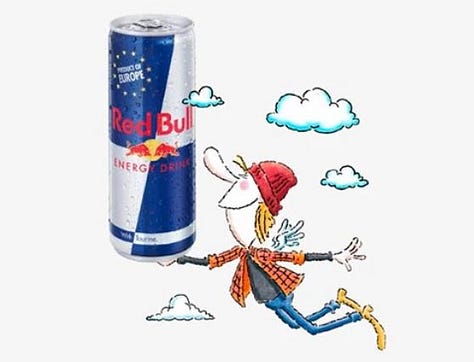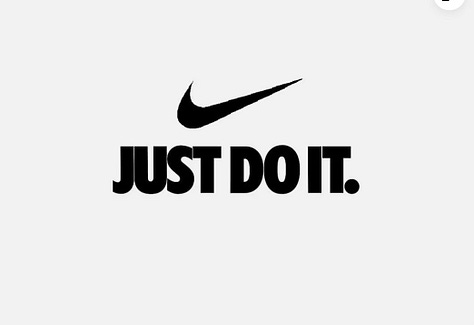In a world where everything is branded, where even our words and sounds are carved out and owned, we’re forced to confront some uncomfortable truths about what matters in our society. Take Jools Lebron, a TikTok influencer who saw her catchphrase, "Very Demure, Very Mindful," snatched up by someone quicker on the trademark draw.
It’s not just a glitch in the matrix of modern capitalism—this is the matrix. It’s about power, identity, and the ever-tightening grip on culture in our digital age.
Beyond Shades
Trademarking isn’t just about locking down colours, as I’ve discussed in a previous article here. It’s words, phrases, and even sounds that get boxed up and sold to the highest bidder. What started as a way to protect creativity has morphed into a tool for the powerful—a way to lay claim to the cultural artefacts that define us, whether it’s a particular shade or a viral phrase. Jools Lebron’s experience isn’t unique; it’s a glaring example of how the creative work of marginalised communities gets co-opted, trademarked, and sold back to us by those with the means to do so.
The Power of Sound and Word in Modern Marketing
Think about the sounds that punctuate our lives—the chime of an Apple device, the roar of MGM’s lion, the five-note jingle of Intel. These aren’t just noises; they’re trademarks, owned and protected - contributing to a brand’s market power - as if culture itself could be fenced off. Red Bull’s “It Gives You Wings” or Nike’s “Just Do It”—these aren’t just slogans; they’re stakes in the ground, marking territory in our collective consciousness. When these phrases and sounds are trademarked, they stop being part of our cultural fabric and become assets, owned and guarded. And where does that leave the rest of us? Excluded, watching from the sidelines as creativity is fenced in.



A Mirror to Our Times
The fact that we can own sounds, words, and ideas reflects a world where even the intangible—our expressions, our emotions—can be bought and sold. It’s capitalism at its finest, or perhaps at its most sinister, where creativity’s worth is measured not by its beauty or impact but by how well it can be owned, controlled, and commodified.
When our very expressions are subject to ownership, we have to ask ourselves: what kind of culture are we building? Are we fostering a space where creativity thrives, or is this a cautionary tale of how we are laying down barbed wire around it?
As we will go on to see, there is a stark difference between how a well-resourced company can successfully trademark and monetise a phrase – turning it into a global marketing powerhouse – in contrast to the challenges faced by individual creators aiming to protect and monetise their words.
The very act of trademarking expressions, built under the guise of safeguarding creativity, is simply another gatekeeper, one that swings open only to those who can navigate its legal labyrinth.
Digital Age Exploitation
Jools Lebron’s story is more than just a legal battle; it’s a reflection of how easily success can be snatched away in a system that’s rigged against the underrepresented. As a creator from a marginalised community, Lebron’s catchphrase has risen quickly in popularity, with her attributing it to a moment of joy and expression within her journey – the prospect of financial security that could support her transition and her future. Yet it was taken from her by an opportunistic third party in a system doing little to protect the most vulnerable creators.
Catalogue of Cultural Theft
· "Slay" and "Yasss" – Born in Black LGBTQ+ communities, have been widely appropriated, snatched up by mainstream culture and turned into marketing tools. These phrases have been used in marketing, fashion, and other industries, often stripping them of their original context and significance. The communities that birthed them? Left largely without acknowledgment, without the profits and watching as their language is commodified and sold back to them.
· Urban Outfitters vs. Navajo Nation: In 2012, Urban Outfitters tried to profit off the Navajo name, slapping it on products like underwear and flasks without a second thought. UO stated the term Navajo had become “generic” however, the Navajo Nation fought back, arguing that their name wasn’t just a trendy label but a part of their identity. The legal battle spanned 4 years, with the Navajo Nation receiving financial support from various advocacy groups in order to sustain their fight. In the end, a settlement was reached— a reminder of the difficulties indigenous communities can face in asserting ownership over their cultural identifiers. This was a rare victory in a world where cultural symbols are often treated as fair game.
· Kayla Newman and "On Fleek": In 2014, Kayla Newman, or Peaches Monroee, coined “on fleek” in a Vine video that went viral. The phrase became part of the cultural lexicon and was widely used by celebrities and brands alike. While brands like IHOP, Nike and Forever 21 profited from her words, she struggled to capitalise on her own creation. In 2017 efforts were placed heavily on a GoFundMe campaign to fund the trademarking; but the phrase was everywhere, and claiming it was like trying to bottle lightning. A stark reminder of how quickly the digital landscape can turn against those who create it, particularly by marginalised creators.
Closing Thoughts
The idea that we can only make money if we "own" something says a lot about the intersection of creativity and capitalism. It forces us to question who really profits from culture and whose voices are silenced in the process. The ease with which a corporation can secure and benefit from a phrase, in contrast to an individual like Lebron, reflects that the legal maze of trademarking isn't a fortress for all:
it's a private garden, lush and green, but accessible only to those who know the way through its twisted paths. For the rest, it’s just another barrier and another reminder that in this world, ownership and access are privileges, not rights.
For creators, their brand is deeply intertwined with their identity and for those from marginalised communities, trademarks serve not just to protect their financial interests but to safeguard their cultural and personal expressions from being distorted. This crossing of identity and commerce complicates the traditional understanding of trademarking, making it not just a business decision, but a form of self-preservation.
If we want a world where creativity is truly valued, we need to rethink this ownership model. We need spaces where culture can breathe, evolve, and be shared freely, without fear of exploitation. That means pushing for reforms that protect creators, not just corporations, and ensuring those who give life to our language, our art, and our music aren’t silenced by those who would turn their work into a commodity.
When the balance between corporations and individuals is redistributed, I believe we can live in an economy where innovation is celebrated - not at the expense of the free expression that fuels it, but in harmony with it, empowering creativity in all its forms.
For Interest: Some of the most famous and bizarre trademarked phrases/sounds:
· Paris Hilton - “That’s Hot”- Trademarked in 2004, Hilton has fought to protect it in court, turning a simple phrase into a personal brand, successfully defending it to this day despite multiple legal disputes.
· Marvel & DC – “Superhero” - ??? They co-own the word. Since the 1970s they’ve jointly trademarked it and other variations like “super-hero” and “super heroes”. Such a generic term it hurts my head, too much to say about this one. Who gets to decide who can use a word that feels like it belongs to everyone?
· Taylor Swift – “Nice to Meet You. Where You Been?” – lol? In 2014 she trademarked several phrases from her 1989 album, including this one. These trademarks allow her to control the use of these phrases on items such as clothing, accessories, and even household items like kitchenware.
· Zippo Lighter – Click Sound – The distinctive click sound produced when a Zippo lighter is opened and closed has been trademarked since 2018. This is a prime example of a non-traditional trademark, where distinctive sounds recognisable to consumers are being used to distinguish products and reinforce brand identity.
· Darth Vader - Breathing Sound – You know, the heavy breathing sound from behind the mask. The company behind Star Wars trademarked the sound in 2009, claiming it is a key part of the character’s identity and brand recognition.
Thank you for reading Threads of Thought. This work is a labour of love, offered freely to all. If you feel you learnt something or feel moved to support my creative journey, you can donate below. Your support for my craft is deeply appreciated.




